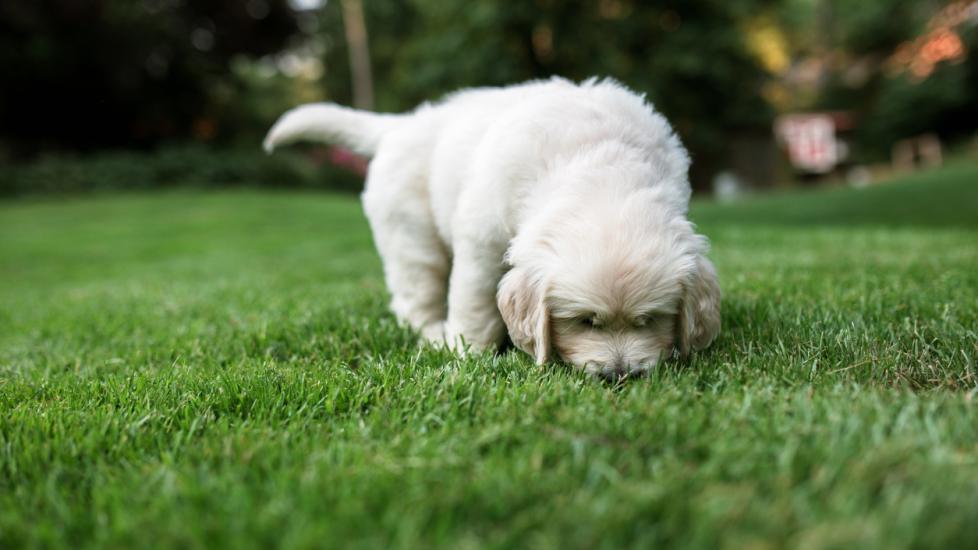Pesticide Poisoning in Dogs
What Is Pesticide Poisoning in Dogs?
Pesticides are an extremely large category of products that can be used to kill, repel, or control plants, insects, or animals considered pests. Ingestion of pesticides is common in dogs and is consistently one of the top 10 toxicities among pets reported by the ASPCA Animal Poison Control Center.
Toxicity from pesticide poisoning can range from mild to life-threatening—depending on what specific substance was ingested and how much. Since it can be hard to determine immediately how toxic a particular pesticide is, pesticide poisonings in dogs should be treated as an emergency and you should contact your veterinarian immediately if you suspect your pet ingested any form of pesticide.
Common Pesticides Poisonous to Dogs
There are more than 17,000 pesticide products on the market, and they are grouped by which pest they work to eliminate. Below are some broad categories typically seen, and common brand name examples of each:
-
Herbicide: Herbicides are chemicals used to control undesirable plant or vegetation growth. Some common product brand names include Roundup, Rodeo, and Spectracide.
-
Insecticide: Insecticides are chemicals used to kill or repel insects. Common brand names include Orthrene, Sevin, and Raid.
-
Rodenticide: Rodenticide, also known as rat poison, is designed to kill rats but is toxic to all mammals. Top brands include d-CON and Tomcat baits.
-
Nematicide: Nematicides are substances used to kill worms. These are used frequently for crops and gardening. Additional lines of nematicides are offered by Garden Safe and Ortho.
-
Molluscicide: Molluscicide, also known as snail bait or slug pellets, are products used to kill slugs and snails that damage crops and plants. Common brands that carry molluscicides include Garden Safe, Dr. Earth, and Corry’s.
-
Fungicide: Fungicides prevent the growth of molds on food crops and plants. Fungicide is often included in lawn care products, including BioAdvanced and Scotts.
-
Larvicide: Larvicides are substances used to kill mosquitoes and larva. Altoside and BioAdvanced are other brand examples of larvicide.
Symptoms of Pesticide Poisoning in Dogs
Clinical signs vary depending on the type and amount of pesticide ingested. In most cases, symptoms may be seen in the first few minutes after exposure but can be delayed for up to a few days. Some common clinical signs include:
-
Abdominal pain
-
Decreased appetite
-
Irritation to the skin, eyes, or mucous membranes
-
Uncontrolled urination or defecation
-
Stumbling or trouble walking
-
Tremors or seizures
My Dog Licked Pesticide, Now What?
If your dog licked or ingested pesticide, try to determine how much and what type of product was consumed. Determining the type of pesticide and active ingredient is crucial for evaluating the level of toxicity. It is very helpful to have the packaging (or what is left of it) from any product your pet ingested. You may also call the company that applied the product for specific product information.
Quickly gather as much information as possible and call your veterinarian. You can also call the Pet Poison Helpline at 855-764-7661, or the ASPCA Animal Poison Control Center at 888-426-4435 for more help determining if your pet needs to go to the emergency veterinarian. Remember, dogs should be treated as quickly as possible.
Treatment of Pesticide Poisoning in Dogs
If your pet ingested pesticide in the past hour, your veterinarian may recommend inducing vomiting at the hospital as a means of decontamination. If your dog is already showing clinical signs, it may be too late to induce vomiting, as there is a risk of aspiration pneumonia. Activated charcoal may also be used to bind any additional toxin remaining in the stomach. The toxin passes when the dog defecates.
If the active ingredient was extremely toxic, or your dog ingested a large amount of pesticide, your pet may need to be hospitalized for IV fluids and additional medical therapy—depending on the type of pesticide and its symptoms. The recommended baseline evaluation includes a complete blood count, serum blood chemistry, and urinalysis.
Given the extremely large number of pesticide products available for purchase, it can be very difficult to identify which ones are low toxicity versus high toxicity. The veterinarian will likely utilize one of the pet poison helplines to make this determination and identify recommendations for treatment.
Pesticide poisoning can be deadly, but, with early diagnosis and aggressive therapy, the prognosis is typically good. Most dogs that recover typically go on to live normal lives and no long-term follow-up will be needed.
Keeping Dogs Safe from Pesticide Poisoning
Prevention is key when it comes to toxicities in dogs. While specific directions can vary for each individual product, a general rule of thumb is to allow all liquid herbicides, insecticides, and pesticides to completely dry and keep the pet off the area for a minimum of 48 hours.
Keep a detailed record of what pesticides are used as well as when and where they were applied. Take special care in documenting the location of any baits, pellets, or traps which will remain in the environment.
The best way to prevent pesticide poisoning in dogs is to keep all lawn and garden products—including herbicides, insecticides, and pesticides in a secure place pets cannot access. Do not leave products open or unattended while working in the yard. Consider letting your furry friends relax indoors away from the area where the pesticides are being applied.
Featured Image: iStock.com/RyanJLane
